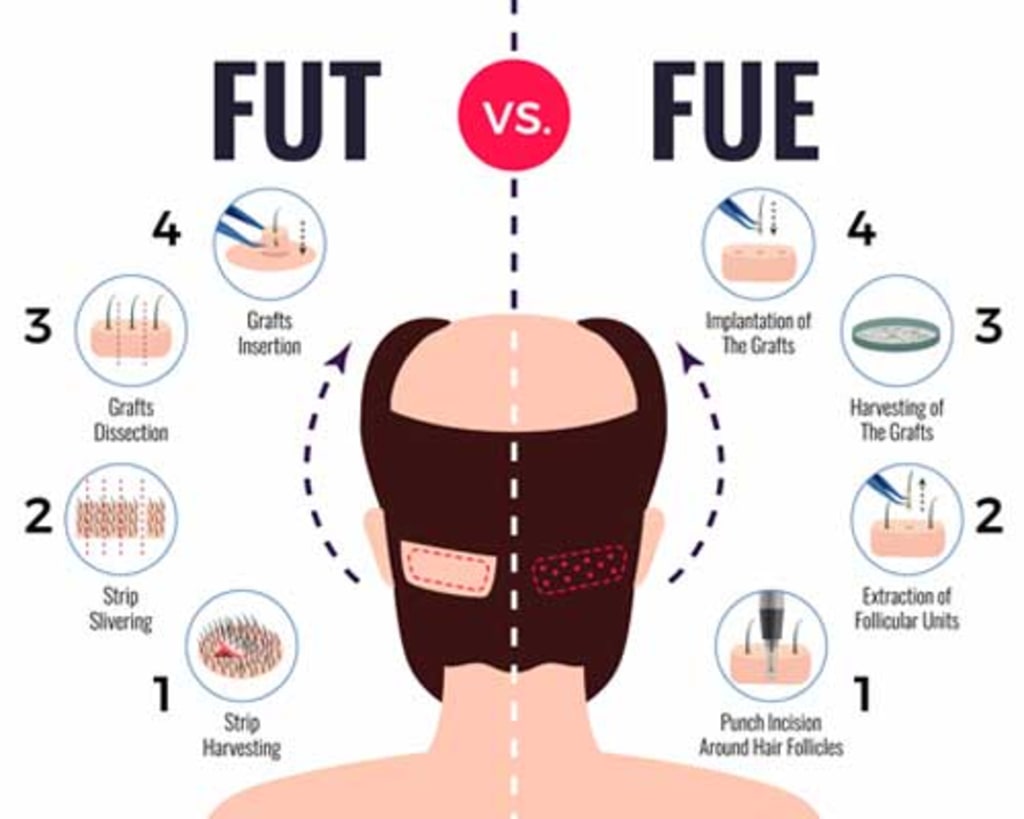Types of Hair Transplants: Which Procedure Is Right for You?
Types of Hair Transplants: Which Procedure Is Right for You?
Hair loss can be a frustrating and even debilitating condition for many people. If you’re considering a hair transplant, there are a few different procedures to choose from. The best type of hair transplant for you will depend on your individual needs and goals.

Follicular Unit Transplantation (FUT)
FUT is the traditional type of hair transplant. In this procedure, a strip of scalp is removed from the back of the head, Types of Hair Transplants ,where hair loss is less likely to occur. The strip is then divided into individual grafts, which are transplanted into the balding area.
FUT is a relatively straightforward procedure, but it does leave a linear scar on the back of the head. This scar is usually hidden by hair, but it may be visible if you shave your head.
Follicular Unit Extraction (FUE)
FUE is a newer type of hair transplantTypes of Hair Transplants that doesn’t involve removing a strip of scalp. Instead, individual hair follicles are extracted from the donor area using a needle or punch. The grafts are then transplanted into the balding area.
FUE is a more precise procedure than FUT, and it leaves no visible scars. However, it can be more time-consuming and expensive.
DFI hair transplantation is a newer technology that involves extraction of hair follicles from the donor area one by one with automated machines. The follicles are then separated and are charged in medium, which enhances the life and quality of root & hair..
- Platelet-Rich Plasma (PRP) Therapy: Not exactly a transplant, but an adjunctive treatment. PRP involves using your own platelets to stimulate hair growth. It’s often combined with hair transplants to enhance results.
- Stem Cell Hair Transplant: Stem cell technology is being explored to improve hair transplant outcomes. This technique involves using stem cells to promote hair follicle regeneration, potentially leading to more robust hair growth.
- Robotic Hair Transplant: The future is here! Robotic-assisted hair transplants combine precision and automation. A robotic system identifies and extracts hair follicles, reducing human error and speeding up the process.
No matter which type you choose, Types of Hair Transplants , remember that consulting with a qualified hair restoration specialist is essential. They’ll evaluate your hair loss pattern, donor area, and overall goals to recommend the best approach for you. 🌟
Ready to take the first step toward a fuller head of hair? Book a consultation today and embark on your journey to hair confidence! #HairTransplantTypes #HairRestorationOptions #ConfidenceInEveryStrand
Types of Hair Transplants , DFI Hair transplant is considered to be the one of the best option for hair transplant but involves
Types of Hair Transplants ,It’s important to talk to a qualified doctor and clinic to learn more about the different procedures and to determine which one is right for you.
Here are some additional factors to consider when choosing a hair transplant procedure:
- The size of the balding area.
- The amount of hair you have in the donor area.
- Your budget.
- Your expectations for the procedure.
Conclusion
Hair transplants are a safe and effective way to restore hair growth in areas that have been affected by hair loss. There are a few different types of hair transplants available, so it’s important to choose the right clinic & determine which one is right for you.










